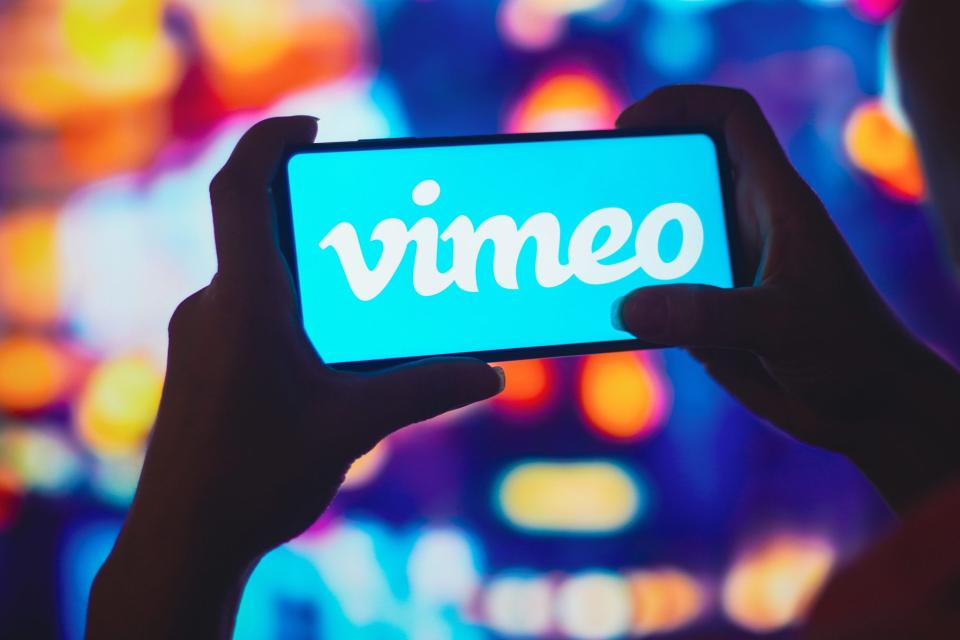Exclusive: Vimeo launches new AI video tools to help employees breeze through hours-long town halls and training videos. Will it usher in the golden age of asynchronous work?

Hello and welcome to Eye on AI.
Today we have an exclusive on new AI-powered video capabilities from Vimeo—and with it a conversation I think encapsulates a lot of what companies are going through in this current moment of integrating AI into their workflows.
Vimeo is not just a YouTube runner-up from the earlier days of the internet. The company has increasingly sold its products to corporations, supporting customers like Whole Foods, eBay, and Starbucks with tools to help them create, host, and manage in-house video content—from training modules to recordings of town hall meetings. Today, the company will launch Vimeo Central, a bundle of AI video features it hopes will transform these often boring corporate videos into something employees will actually want to watch.
The primary selling point for the features, according to Vimeo, is that they’ll make it faster and easier for employees to find and consume the information they need. This includes tools for automatically chaptering videos and generating titles and hashtags, making them more searchable. Features for creating summaries and turning hours-long videos into five-minute highlight clips will take this even further, potentially eliminating the need for employees to join those lengthy town hall meetings altogether. Vimeo is also rolling out an AI-powered chatbot to enable users to ask questions about the content of videos. And lastly, the launch includes analytics so companies can see if employees are actually tuning in. Like most companies launching AI tools, Vimeo is tapping OpenAI’s models for the technology.
Though these features would have barely been possible a year ago, they’re already becoming commonplace and are in line with what other companies, including competitors in enterprise video, are putting out. Zoom, for example, launched many of the same AI features last fall, including capabilities around chaptering videos and generating summaries. YouTube has also been experimenting with AI features for asking questions about a video you’re watching and summarizing the discussion playing out in the comments. This isn’t to say the new Vimeo features won’t make a difference for its users, but it shows how standard these capabilities are quickly becoming amid ultra-fast AI innovation and a growing appetite for adoption.
None of this is lost on Viemo interim CEO Adam Gross, who spoke to Eye on AI for his first-ever interview in the role since joining the company last July. He didn’t paint the features as groundbreaking but rather focused more on the nuance around what he sees as a changing dynamic in how teams communicate. After the pendulum swung perhaps too far toward virtual meetings and chat tools when the pandemic uprooted the way we work, Gross says Vimeo thinks asynchronous communication is actually the key to staying in sync, and the company is betting that video—and what AI can do for video—will deliver it.
“Really what Vimeo Central is about is asynchronous,” he said.
Now, this doesn’t mean there isn’t a time and place for synchronous meetings and live events. But Gross believes these are best utilized when they feed asynchronous content and that “the power is in having this library that your organization can use.”
“Having the ability to easily extract, easily query whether it's a town hall or meeting or training video or screen recording, and surface all of that. Ultimately, I just think it's going to be easier for people to stay in sync and keep employees engaged and collaborative. Being engaged, I think, is one of the biggest challenges that organizations face,” he said.
Altogether, Gross made clear Vimeo is trying to deliver not just AI tools, but an entire AI strategy to its customers as well. Indeed, the strategy part has been one of the biggest challenges for companies trying to adopt AI. In a recent survey of 1,400 C-suite executives in 50 markets conducted by Boston Consulting Group, almost half of executives cited an unclear AI roadmap as the reason they’re ambivalent or outright dissatisfied with their organization’s progress on generative AI so far. Furthermore, a Forrester report on the state of generative AI in 2024 published earlier this month revealed firms are taking a cautious approach to integrating generative AI and are starting with internal usage first, which bodes well for Vimeo’s internally targeted offerings.
“We're not here just selling a bunch of AI features, AI capabilities, that it's up to you to work out how to plug in and use and fit into your workflow or integrate. And there are a lot of companies that are doing that,” he said. “We think what's important is providing a full suite of solutions that a company can use end-to-end and has everything they need to be successful with. Which means not just the AI pieces—you need the library, you need capture, you need events, you need the whole picture.”
And with that, here’s more AI news.
Sage Lazzaro
sage.lazzaro@consultant.fortune.com
sagelazzaro.com
This story was originally featured on Fortune.com

 Yahoo Finance
Yahoo Finance 